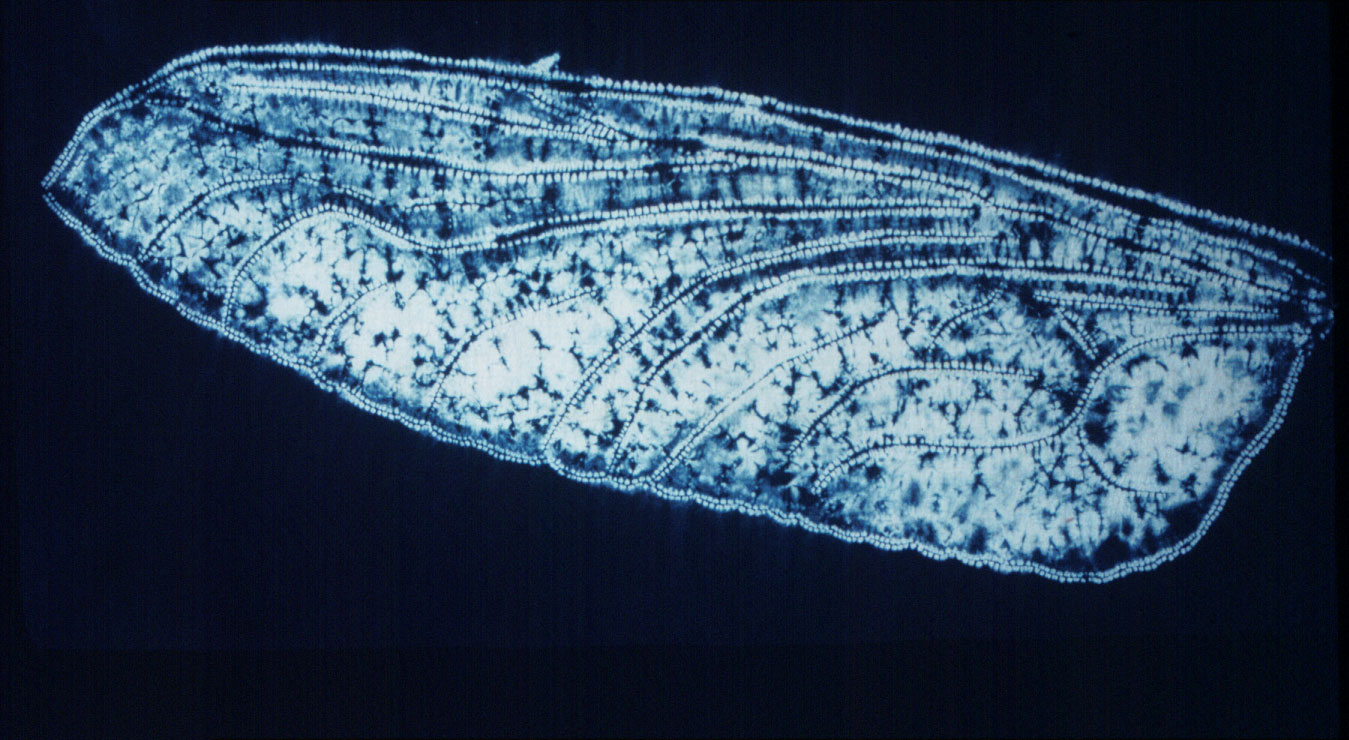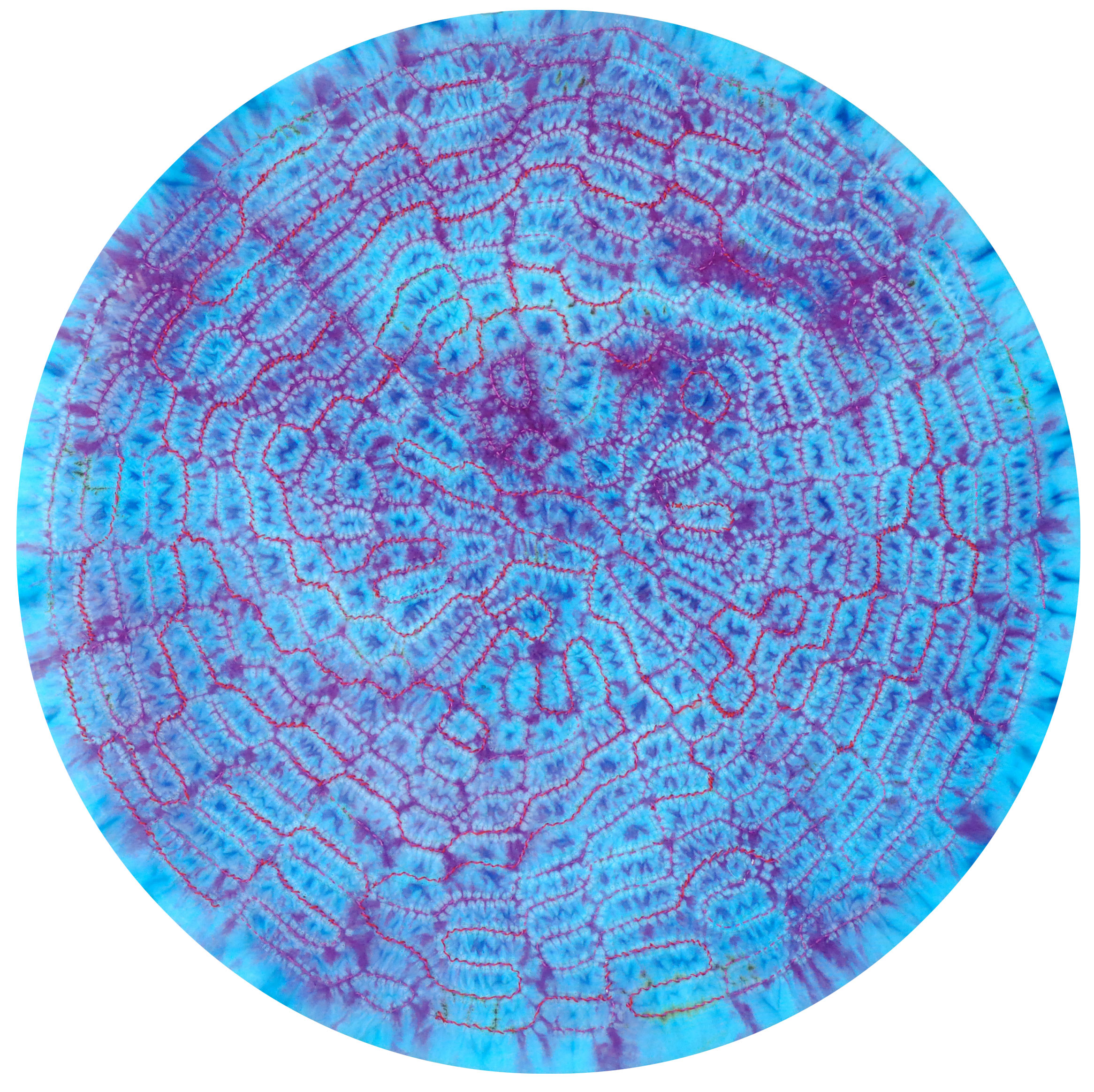SHIBORI: A JAPANESE CRAFT
In 1978, I took lessons in an indigo dyeing technique that mimicked wrinkled patterns in nature. Called shibori, “wrinkle resist” from Japan, that bore a resemblance to tie-dye. However, it could achieve finer detail by hand sewing or wrapping with fine thread. The shibori “glow” came from the fact that the indigo varied in intensity, becoming lighter near the tied patterns. This was introduced to the U.S. by Yoshiko Wada, a teacher at Fiberworks.
It had an appeal for me from the moment I first saw it, because the artist’s hand was effaced: the designs seemed not to have been created by any human, but had a Shroud of Turin quality. The viewer’s thought would be first, “How wonderful this natural pattern is!” and only later, “How in heck...?”
There was also the pleasure of participating in an ages-old craft, maintaining a full garbage can of indigo dye in back of my house.
Nui and mokume shibori were excellent for showing branching patterns in nature. The Japanese use it extensively for leaf motifs. The Kirlian Effect, done in nui shibori, was one of the few instances where I attempted to copy a famous science photograph. The Russians Semyon Kirlian and his wife found that a leaf or other object placed in direct contact with film placed upon a metal plate that was charged with high voltage, high frequency electricity in a darkened room would leave a haloed, glowing image.
Mokume shibori requires row upon row of gathered stitches, slightly offset, to produce an overall texture, usually used in Japan for effects like leaves and tree bark. Thanks to Peter Stevens’ book,, I recognized that the branching of growing plants and the branching of stream erosion were related. I sewed thousands of running stitches on thin linen outlining a canyon scene. Many wrinkles were formed in the process that would dye blue, producing small branching patterns that ran perpendicular to the direction of the rows of stitching, like crevasses in the canyon walls. As far as I know, I have been the only one to use mokume shibori on branching patterns in geologic erosion patterns.
My most elaborate shiboris were two based on a moiré motif on 30-inch squares of cotton. I used Mokume shibori. While I was undoing the many threads of sewing of the first one, Mount St. Helen’s was eruptingin Washington State. Instead of ironing the first one flat, I exploited the fact that the gathers gradually rose to a point in the center to create a volcano shape, naming it Seismic Fuji.
The second so disappointed me that I stuffed it into a sack for thirty years. I had pictured four symmetrical white rays. One was dim. Pulling it out in 2014, I marveled that I could have ever done it! The asymmetry had a charm of its own. I christened it Spirit in Motion.
Audio Radiance was inspired by a wave-form pattern on the head of a vibrating drum. Originally covered in fine white powder, dark areas appeared where the drum was vibrating vigorously. After preparing my design by sewing many stitches, I dyed it with a dye that didn’t show the design well, so embroidered it. The embroidery is where, on the drum head, the white sand remained in place.
Regrettably, stitch by stitch is a slow way to do art. By 1983, my mind was racing ahead. The next series, seen in the Patterns in Nature gallery, was my N.A.S.A. series (Not Actually Science Achievements), 1986-9, also based on wrinkling—this time, paper.
















